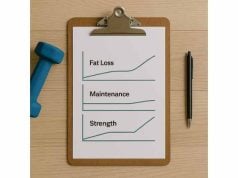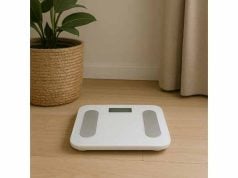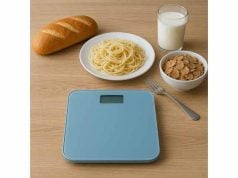
Your watch says 10,000 steps. The scale says unchanged. If that tension feels familiar, this guide is for you. Steps are a powerful tool, but they work best as part of a plan that respects energy balance, recovery, and real life. We will clarify what daily steps actually contribute, how to set a personal baseline, and how to build an increment plan that survives busy weeks, bad weather, and low motivation. You will learn when to add cardio, when to adjust food, and how to troubleshoot plateaus without guesswork. If you are stuck right now—or switching between deficit and maintenance—our structured plateau and maintenance troubleshooting pairs well with the step framework below.
Table of Contents
- Are steps enough for fat loss?
- How many steps actually help?
- Build your step baseline
- Increment plans that stick
- When steps plateau, what next?
- Safety and recovery for high steps
- Evidence and real-world ranges
- Frequently Asked Questions
Are steps enough for fat loss?
Steps improve health, mood, and calorie burn—yet they are not a magic switch for fat loss. Fat loss requires a calorie deficit sustained over time. Steps help create or protect that deficit by raising NEAT (non-exercise activity thermogenesis): all the movement outside of formal workouts—walking, fidgeting, carrying groceries, taking stairs. Unlike gym sessions that happen three to five hours per week, NEAT can influence every waking hour, which is why steps matter so much.
Still, steps alone cannot fully control the equation. On days you walk more, appetite often rises, and tiredness later can reduce other movement. Many people also “spend” the extra burn with unplanned snacks or liquid calories. Others start strong, then step counts fade by midweek, shrinking the weekly average below what they expected.
Think of steps as the floor of your daily movement, not the ceiling. They work best when combined with:
- Protein-forward nutrition to support satiety and muscle retention.
- Resistance training to protect lean mass (and future calorie burn).
- Cardio doses placed strategically when steps alone are hard to raise.
- Sleep and stress routines that prevent hidden drops in NEAT.
How much energy do steps add? It varies by body size, pace, terrain, and arm swing, but a realistic planning range is ~35–60 calories per 1,000 steps for many adults. At that rate, moving from 6,000 to 10,000 steps could add roughly 140–240 calories of daily expenditure—useful, but easy to offset with an extra drink or handfuls of snacks. That is why step targets must live inside a complete weight-loss framework, not replace it.
New to the fundamentals? Skim our concise weight loss guide to set calorie, protein, and training basics before you fine-tune steps.
Key takeaways
- Steps are a powerful lever on NEAT and habit change, not a standalone cure.
- Weekly average steps matter more than one heroic day.
- Pair steps with food structure, lifting, and recovery to convert activity into visible fat loss.
How many steps actually help?
There is no single magic number, but most adults succeed with two targets: a baseline floor that is easy on any day, and a progress target that raises your weekly average. Use these ranges as a starting point, then adjust to your size, schedule, and terrain.
Practical ranges
- Health floor: 6,000–8,000 steps per day supports cardiometabolic health for many adults.
- Fat-loss floor: your current 14-day average (see next section) rounded down to the nearest 500. This is the number you commit to every day, even when busy.
- Progress target: +2,000–4,000 steps above your floor on most days, or +12,000–20,000 weekly. This often raises expenditure by ~250–600 calories per day compared with a sedentary baseline, without requiring marathon walks.
Why ranges beat one number
- Individual burn differs. A taller, heavier person at 3.5 mph on hills burns far more per step than a smaller person strolling on flat ground.
- Compensation happens. Extra steps can reduce other movement unless you plan a NEAT floor.
- Consistency wins. A stable 8,500–10,000 average usually beats a seesaw between 3,000 and 15,000.
How to choose your first targets
- Calculate your 14-day average (instructions next).
- Set your daily floor = average minus 500–1,000 (make it fail-proof).
- Set your progress target = floor + 2,000–3,000.
- Track the weekly average and your weight trend for two to four weeks.
If your step count collapses when calories are low, you may be experiencing an adaptive drop in NEAT. Pair your target with habits that hold movement up during cuts—see our guide on how to prevent NEAT drops.
Reality check
- If your baseline is 3,500–5,000 steps, pushing to a consistent 8,000–10,000 is a high-impact first win.
- If you already average 10,000–12,000, small increases deliver diminishing returns; adjust food structure or add short cardio blocks instead (covered below).
Build your step baseline
Before setting ambitious goals, measure what you actually do—weekdays and weekends. A clear baseline prevents overpromising and helps you design increments that survive busy seasons.
Step 1: Capture two honest weeks
- Wear the same device all day (or keep your phone on you).
- Do not chase numbers; live normally.
- Log steps and notes: weather, travel, long meetings, kids’ schedules.
Step 2: Calculate three numbers
- Weekday average (Mon–Fri).
- Weekend average (Sat–Sun).
- 14-day overall average (the one you will use).
Often the weekend average is 2,000–4,000 steps lower than weekdays. Knowing this prevents a misleading overall number and reveals where to focus.
Step 3: Set your floor and bumpers
- Daily floor: choose a number you can hit even on tough days (e.g., average minus 500–1,000).
- Weekend bumper: add a small non-negotiable like a 30-minute morning walk or “three 10-minute loops” to protect the average.
- Bad-weather plan: treadmill access, mall loops, parking-garage laps, or indoor circuits.
Step 4: Design your anchors
Anchors are repeated moments that you always attach to movement:
- After meals: take a 10–12 minute walk after breakfast and lunch.
- During calls: walk the first 10 minutes of every call.
- Commute swaps: park far, get off transit one stop early, or use stairs once per building.
- Evening reset: a short loop after dishes; head out before the couch.
Step 5: Track progress you can feel
Besides steps, watch a few non-scale signposts:
- Resting heart rate trends.
- Daily energy and mood notes.
- Clothes fit and waist measurements every two weeks.
If the scale lags behind because of water or glycogen, these markers show that the plan is working. For a broader view of progress during cuts, see our quick guide to non-scale progress.
Baseline example
- Weekdays: 7,600 steps; Weekends: 4,900 steps; 14-day average: 6,950.
- Floor: 6,000; Progress target: 8,500–9,500 most days.
- Anchors: 12-minute walks after breakfast and lunch; first 10 minutes of calls on foot; evening loop on weeknights.
Increment plans that stick
Increments fail when they are too big, too vague, or detached from your schedule. Use small, repeatable blocks and place them where friction is low.
Build with 500–1,500 step blocks
- Each block is roughly 5–15 minutes of easy walking.
- Stack two to three blocks across the day instead of chasing one long session.
- Make the first block automatic (e.g., right after breakfast).
Four-week template
- Week 1: Add +1,000 daily above your floor via two 10-minute walks.
- Week 2: Hold +1,000; on two days add a third 10-minute walk (+500).
- Week 3: Add a hilly route or slight pace increase on one loop (same time, more steps).
- Week 4: Keep the same total but front-load steps earlier in the day to reduce evening slumps.
Make it weather-proof
- Indoor options: treadmill at 3–4 mph, mall loops, stairs, parking garages.
- Micro-circuits: 5 rounds of 1 minute brisk marching + 30 seconds of light bodyweight moves (no jump impact).
- Errand hacks: carry bags one trip at a time, take the long aisles at the store.
Automation beats motivation
- Calendar nudges for anchor walks.
- “Shoe rule”: lace up immediately after meals.
- Pre-set playlists or podcasts for 10-minute blocks.
If you periodize training across the year, align step increments with your broader plan so they are sustainable across cut and maintenance phases. For a bigger picture of seasonal planning, see our simple annual plan.
When steps plateau, what next?
You will hit weeks when your average refuses to budge. Treat plateaus as feedback, not failure. Work through this quick triage before slashing calories.
1) Check the basics
- Are anchors still in place? If a single anchor fell off, restore it first.
- Did weather, travel, or illness compress your day? Use indoor loops for 10–15 minutes to protect the floor.
- Is sleep short? Short nights usually reduce NEAT; rebuild sleep to prevent hidden drops.
2) Add low-strain cardio
Two to three times per week, add 20–30 minutes of easy cycling, elliptical, or incline treadmill at conversational pace. This protects weekly energy expenditure without demanding more walking time.
3) Improve “step density”
- Slightly increase pace on one daily loop (same minutes, more steps).
- Add gentle hills or staircase sets.
- Use rucking (light backpack) once per week to raise effort without running.
4) Adjust food only after behavior is solid
If the weekly average, lifting frequency, and cardio doses are consistent for two weeks and weight is flat, trim 100–200 calories from carbs or fats (not protein) and reassess for 2–3 weeks. For a structured approach to changes, see how to adjust calories and macros.
5) Plan breathers, not abandonments
High-stress weeks happen. Protect the floor, hold protein, and keep two anchors. Resume increments next week rather than restarting from zero.
Safety and recovery for high steps
More is not always better. Rapid step increases can irritate feet, shins, hips, or lower back. Guard your plan with simple safety rules so progress is durable.
Progression rules
- Increase weekly average steps by ~10–20%, not 100%.
- Every 3–4 weeks, hold steady for a “consolidation” week.
- Rotate surfaces: mix sidewalks, tracks, treadmills, and trails to vary impact.
Foot and lower-leg care
- Shoes should feel boringly comfortable; replace worn pairs.
- If shins ache, cut back 20–30% for a week, walk softer surfaces, and add light calf raises and ankle mobility work.
- Use shorter, more frequent bouts rather than one long push.
Recovery that keeps steps high
- Protein: 1.6–2.2 g/kg of goal body weight daily.
- Hydration and electrolytes, especially in heat.
- Sleep: aim for 7–9 hours in bed; short nights reduce NEAT and raise cravings. For an integrated plan, see how to repair recovery in our guide to sleep and cortisol.
Who should modify targets
- Adults with joint pain, neuropathy, balance issues, or returning after injury—start low, progress slowly, and favor softer surfaces.
- People with very high body mass—use more cycling, pool walking, or elliptical while gradually building step tolerance.
- Shift workers—protect a consistent daily floor and use short indoor bouts anchored to shift changes.
Safety is not a detour from fat loss; it is the requirement that lets you keep showing up.
Evidence and real-world ranges
Use these ranges to plan without chasing perfect numbers. Individual responses vary with body size, pace, terrain, and training background.
- Energy per 1,000 steps: ~35–60 kcal for many adults.
- Baseline to active shift: moving from 4–6k to 8–10k steps/day often raises daily burn by ~150–300 kcal.
- Add-on cardio: two 30-minute easy sessions can contribute ~200–400 kcal/week, depending on size and mode.
- Weight-loss pace reality: 0.5–1.0% body weight per week is sustainable when steps, lifting, protein, and sleep align.
- Weekly averages win: a stable 8,500–10,500 average beats a jagged pattern between 3k and 15k.
A sample “sticky” week
- Floor: 7,000 steps daily.
- Anchors: 12-minute walks after breakfast and lunch; first 10 minutes of calls on foot; evening loop Mon–Thu.
- Progress target: 9,500–10,000 on five days; 7,000–8,000 on two rest-days.
- Add-on cardio: Tue/Thu 25 minutes easy cycling.
- Food: protein at 25–40 g per meal; planned dessert on Saturday; alcohol limited to one drink, 3–4 hours before bed.
- Sleep: fixed wake time, 7.5–8 hours in bed.
How to judge success
- Look at weekly weight averages over 2–4 weeks, not single days.
- Confirm that waist or clothes fit change, even if the scale is noisy.
- If you stalled, ask: did steps hold, or did life quietly pull them down? Restore anchors first; adjust food second.
This is what “steps that stick” looks like: consistent floors, small increments, and habits placed where decision-making is easy.
Frequently Asked Questions
Is 10,000 steps necessary for fat loss?
No. Fat loss depends on a sustained calorie deficit. Many people do well at 8,000–10,000 average steps when paired with protein-forward meals and two to four weekly lifting sessions. If your baseline is low, raising it by 2,000–3,000 steps per day is often more impactful than chasing a single number.
How many calories do 1,000 steps burn?
It varies by size, pace, and terrain, but a planning range of about 35–60 calories per 1,000 steps fits many adults. Focus on raising your weekly average and protecting your daily floor rather than trying to convert every step to an exact calorie number.
Should I add cardio or more steps?
Start by protecting a daily floor and adding 2,000–3,000 steps above it. If your schedule or joints limit walking time, add two to three 20–30 minute easy cardio sessions weekly. Cardio complements steps and helps stabilize energy expenditure during busy weeks.
Why did my steps go up but weight stayed the same?
Extra steps often trigger higher appetite or weekend compensation, and short sleep can reduce NEAT later in the day. Check your weekly average steps, protein intake, alcohol, and sleep. Judge progress by two to four weeks of weight averages and waist measurements, not single days.
Are long walks better than several short ones?
For fat loss and adherence, several short walks usually win. Two or three 10–15 minute bouts are easier to schedule, reduce joint stress, and are less likely to be skipped. Long walks are great if you enjoy them—just avoid building a plan that collapses on busy days.
Can I lose fat with 6,000 steps?
Yes, if your nutrition creates a deficit and you lift to preserve muscle. For many people, raising average steps from 4–6k toward 7–9k improves results and health markers. Start with a realistic floor, then add small, scheduled increments that fit your day.
References
- Daily steps and all-cause mortality: a meta-analysis of 15 international cohorts 2022 (Meta-analysis)
- Association of Daily Step Count and Step Intensity With Mortality Among US Adults 2020
- Association of Daily Step Patterns With Mortality in US Adults 2023
- Perspectives on exercise intensity, volume, step characteristics and health outcomes in walking for transport 2022
- Non-Exercise Activity Thermogenesis in Human Energy Homeostasis 2022
Medical Disclaimer
This article offers general education about daily steps, activity planning, and weight management. It is not a substitute for personalized medical advice, diagnosis, or treatment. Speak with your licensed healthcare professional before changing your diet, exercise, or medication, especially if you have injuries, chronic conditions, or mobility limitations.
Share and Follow
If this guide helped you turn steps into steady progress, consider sharing it with a friend who is building healthier routines. You can also follow us on Facebook, X, or any social platform you use for practical updates and new step-by-step guides.










